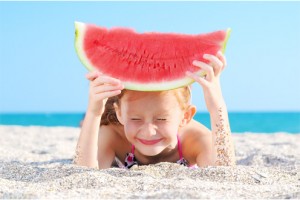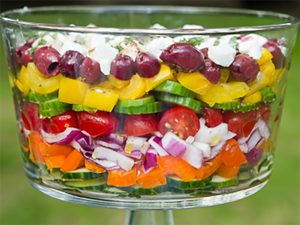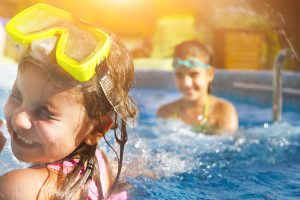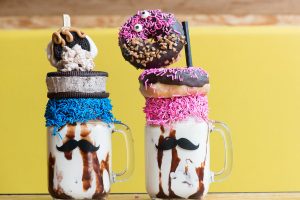5 Worst Foods & Drinks for Kids’ Teeth

After a summer of indulgences, and before the next sugar holiday hits (hello, Halloween!), we’ve been doing some thinking about our kids’ teeth. So we caught up with Dr. Laurel Linetsky-Fleisher, mom of four boys and family dentist at Brush, Floss & Smile to learn some tips on what not to eat and how to care for your pearly whites.
For example, who knew that acidic fruits were bad for our teeth and that brushing right after makes it even worse?
Read on for more about five dentally dangerous foods as well as some tips on what you and your kids can do to prevent dental damage.
Sticky Candy
Gummy bears, sour keys, wine gums and jelly beans may be some of the most popular candies with our crew, but they are also some of the most dangerous as they are more likely to get stuck in the grooves of our teeth, especially in our molars. And the longer the candy stays in the grooves, the more likely you are to get a cavity.
Best Defense: Encourage your kids to brush their teeth immediately after eating this kind of candy as it will dislodge the sticky sugar and allow the saliva to provide its natural remineralization protection.
Dried Fruit
Raisins, dried mangos and dried cranberries are healthy for our bodies but not for our teeth. They are sticky and sugary—and the bacteria that causes cavities can’t tell the difference between table sugar and fruit sugar—which means that raisins are not a good choice for the lunch box as few kids are brushing their teeth after lunch at school.
Best Defense: As with candy, teeth should be brushed right after eating these foods.
Citrus Fruits
As delicious, vitamin-filled and refreshing as citrus fruits are, they’re also extremely acidic and can cause erosion. The most dangerous way to eat them is to cut them into wedges and suck on them, as the direct acid attack on our front teeth from biting into a wedge wears our enamel thin.
Best Defense: It’s best to peel and divide grapefruits and oranges into segments and eat them by chewing with your back teeth. After eating, rinse your mouth out with water. Don’t brush your teeth for 30–60 minutes after eating acidic foods, as the motion of brushing your teeth with acid in your mouth actually makes things worse because you’re scrubbing the acid into your teeth.
Soda and Sports Drinks
Regular soda is both sugary and acidic. Just one can contains approximately 10 teaspoons of sugar! Diet soda does not contain sugar but is still acidic. Dentally speaking, diet soda is better and it’s best to drink it with a straw as this will decrease the surface area of your teeth that the liquid contacts. One 20 oz (560 ml) bottle of a sports replenishment drink contains approximately 9 teaspoons of sugar. While these drinks are supposed to help athletes rehydrate and replenish electrolytes lost during strenuous activity, they are not needed unless you or your child is working out for many hours at a time. Water should be the beverage of choice for hydration before, during and after most exercise regimens.
Best Defense: Coconut water contains electrolytes but none of the acid or added sugar that these drinks contain.
Popcorn
Popcorn’s not sugary or acidic, but it does have two hidden dangers. Unpopped popcorn kernels should never be eaten. They are too hard and can fracture your teeth. Even the half-popped kernels can be dangerous—popcorn kernels are the number one cause of tooth fracture in Dr. Laurel’s practice. The other danger is the husk of a fully popped kernel. The husks are very thin and small and can get lodged in between teeth and gums, which can cause a very painful gum abscess.
Best Defense: Don’t ever eat a partially popped or unpopped kernel. Teach your family to just leave them in the bottom of the bowl. It is also very important to floss your teeth after eating popcorn to get any husk remnants out from between your teeth.










